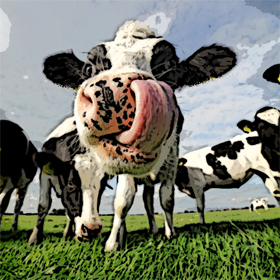Flavor. Taste Is Only Half Of It.
Chapter Two, Part Six.
 Have you ever wondered how your palate is capable of identifying so many different flavors in food and wine since your taste buds are limited to just five basic stimulants? If your taste buds are only capable of discerning sweet, sour, salt, bitter and umami, why are wine reviews so wordy and wine magazines so thick? (Yeah I know, it takes a lot of ads to earn 90 points).
Have you ever wondered how your palate is capable of identifying so many different flavors in food and wine since your taste buds are limited to just five basic stimulants? If your taste buds are only capable of discerning sweet, sour, salt, bitter and umami, why are wine reviews so wordy and wine magazines so thick? (Yeah I know, it takes a lot of ads to earn 90 points).
Your taste buds may be limited, but deciphering flavor employs much more than your sense of taste. It’s the synergistic work of olfaction and gustation that unite to interpret flavor. This phenomenon is commonly called gusfaction. I’m sorry but I can’t help myself, I like to combine big words because I don’t get paid by the word – I get paid by the punctuation mark (which is why I end every paragraph with parenthesis).
Gusfaction (it’s my blog, I’ll call it whatever I want) is triggered when fragrances are released in your mouth through a combination of chewing, body heat and saliva enzymes, which sounds a lot like my honeymoon. These vapors rise through the retro-nasal passage, which is located at the back of your palate, and connect with your smell buds (again, it’s my blog).
Your sense of smell is stimulated as you simultaneously taste the wine on your palate. Your brain combines the sensory information gathered by your mouth and nose, including temperature and texture, and bingo! – you perceive flavor. Your brain cross-references these perceptions with your sense memories and lets you know if you’re tasting Haut Brion or haut bran (or even a haute dog).
Certain spicy or “hot” foods create an irritation or pungent sensation on your palate. To clear up any ambiguity regarding “hot” as in spicy and “hot” as in temperature, this burning sensation in food is referred to as piquance. It comes from foods like chili peppers and horseradish, or from the menthol-like characteristics found in mints and alcohol. Piquant foods stimulate the trigeminal nerve rather than your taste buds. These nerves are located throughout your face which is why rubbing your eyes while slicing jalapeños can be as painful as sitting through an episode of “Here Comes Honey Boo Boo” (come to think of it, nothing is that painful).
There are some pepper proponents who believe piquant’s rightful place is as a sixth taste alongside sweet, sour, salt, bitter, and umami, but those are probably the same people who think Jennifer Aniston and Vince Vaughn can act. Watching these two act stimulates the trigeminal nerve much like rubbing your eyes while cutting chili peppers (you’ll soon find yourself sobbing in pain).
In the end what’s important isn’t how olfaction, gustation, and trigeminal nerve stimulation send signals to your brain; what’s important is how your brain combines these stimulants into the unified perception we call flavor. Your brain does the hard part, all you have to do is pay attention to the tastes, aromas and textures you encounter. Paying attention is the first step on the delectable road to wine appreciation.




















